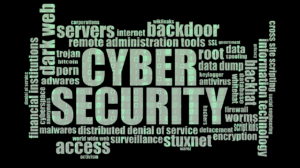Much like single-use plastics, the carbon footprint generated by the digital space is a cause for concern. The world should know that creating, storing, and consuming digital content highly pollutes the environment as these are resource-intensive operations.
Globally, a lot of energy is exhausted when people use websites, from databases to computer screens, increasing carbon emissions. Here are a few sustainable web design principles to help reduce a website’s carbon footprint.
Key Energy Requirements of a Website
Your website’s energy usage activity can be broken down into three types:
- Data storage: Your website consumes energy to keep your pages saved on servers so they can be displayed to visitors.
- Data transfer: Energy is consumed when your website retrieves or sends data, for example, when visitors view a web page on their device.
- Processing power: While generating dynamic page elements like updating web page content, your computer uses energy.
How to Make Your Website More Sustainable?
The best practices to create an energy-efficient website and reduce its carbon footprint:
- Calculate the Website’s Carbon Footprint: Use website carbon calculators to break down your website’s carbon footprint. Find out your site’s data usage, server type, and traffic to determine what makes your website more energy-intensive.
- Optimize Website Content: Compress images and videos on your website. Reduce the number of large-sized videos, images, and scripts on your website to reduce data-transfer operations and energy consumption.
- Streamline Code and Front-End Development: Use clean code to build your website and remove unnecessary code. Avoid using heavy frameworks; instead, use CSS and JavaScript effectively. Implement lazy loading on the website that loads images and videos only when needed.
- Choose Green Web Hosting: Get web hosting from providers with better energy-saving and environmental policies. Your web hosting provider should have renewable energy sources or carbon offsetting.
- Implement User Experience and Sustainability in Harmony: Design responsive, lightweight web pages that load faster. Additionally, perform regular audits and make quick adjustments to ensure your website’s performance and user-friendliness are in top condition. Make implementing the latest sustainable web practices and technologies a part of your website update.
Benefits of a Sustainable Website
An energy-efficient website isn’t just good for the environment; it’s also a cost-saving investment. A sustainable website has optimized coding, media content, and hosting elements. All these consume less energy than traditional websites and reduce operational costs.
A sustainable website also minimizes data transfer and reduces the burden on natural resources, lowering greenhouse gas emissions. Additionally, sustainability in web design also plays a role in our fight against climate change.
While creating an energy-efficient website, we must also optimize the web experience by designing quick-loading media and pages. This also improves user-friendliness, helping you stay updated with the latest trends.
Are There Sustainable Digital Practices Beyond Websites?
For sustainability, following sustainable web design and development practices aren’t the only things to do. Consider using the most energy-efficient digital products, including eco-friendly web hosting solutions and third-party services. Your digital products or services should practice resource efficiency, ensure low carbon emissions, and have minimal environmental impact.
Incorporating sustainable practices into your website not only reduces your digital impact but also cuts down on operational expenses.





